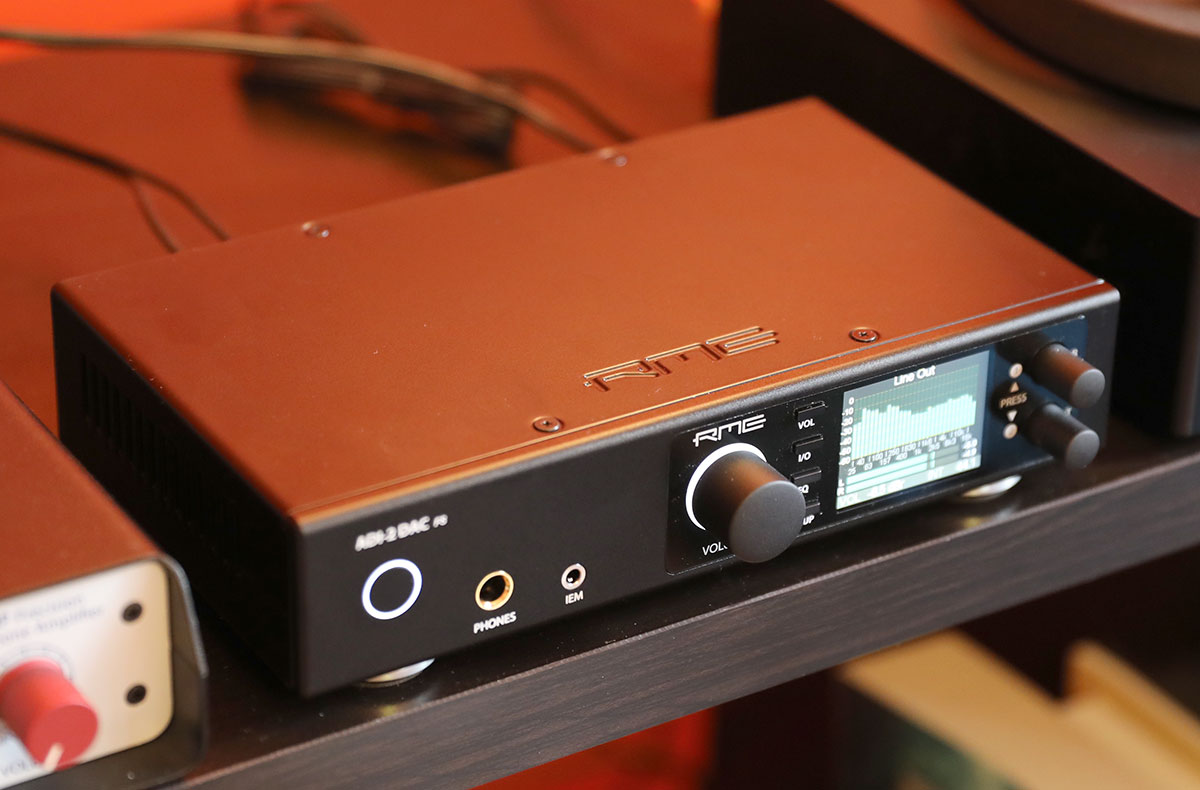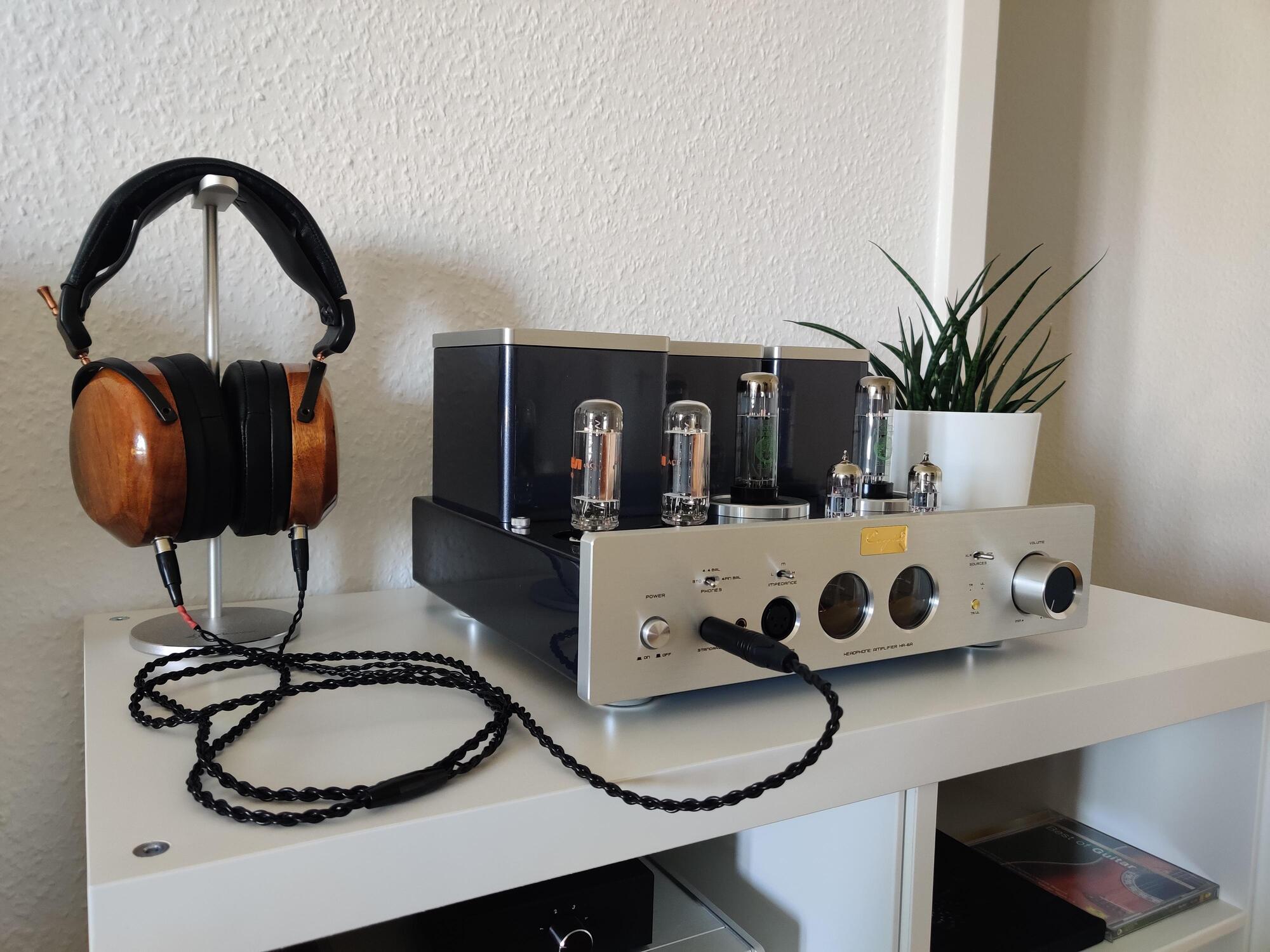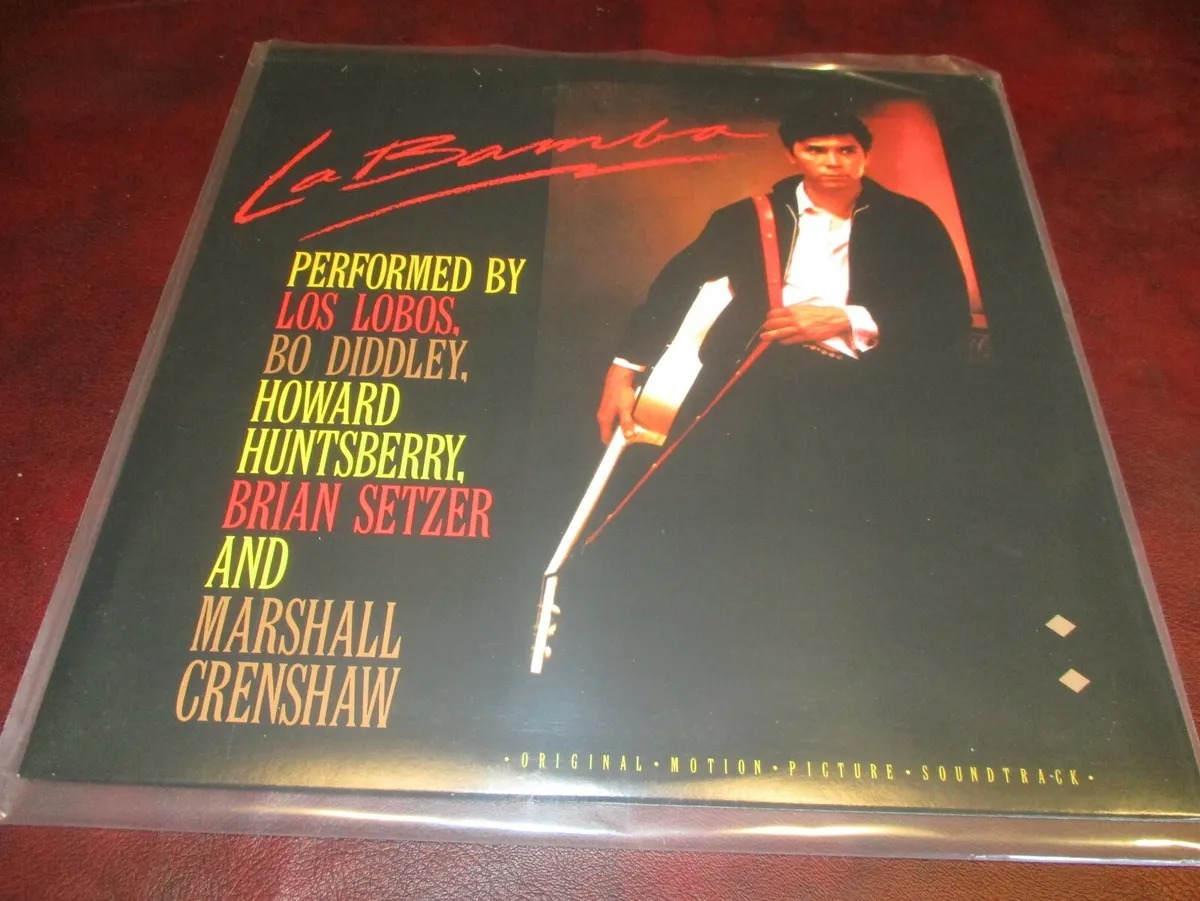Home>Production & Technology>Audiophile>What Is Dac In Audiophile


Audiophile
What Is Dac In Audiophile
Modified: February 18, 2024
Discover the meaning of DAC in the world of audiophile. Understand how this essential component enhances audio quality and delivers superior sound.
(Many of the links in this article redirect to a specific reviewed product. Your purchase of these products through affiliate links helps to generate commission for AudioLover.com, at no extra cost. Learn more)
Table of Contents
Introduction
When it comes to the world of audiophiles, the pursuit of exceptional sound quality is paramount. Audiophiles are passionate about obtaining the highest fidelity audio experience, and they invest in top-notch equipment to achieve this goal. One vital component in any high-end audio system is the digital-to-analog converter, commonly known as DAC.
A DAC is a device that converts digital audio signals into analog signals, which can then be amplified and played back through speakers or headphones. It is an indispensable link in the audio chain, ensuring that the digital audio files we listen to can be translated into audible sound with remarkable accuracy and detail.
In today’s digital age, where music is mostly consumed in digital formats, DACs have become more essential than ever. They play a crucial role in delivering the best possible audio quality from our digital music collections. Whether you’re a casual listener or a die-hard audiophile, understanding what DACs are and their importance can greatly enhance your audio experience.
Throughout this article, we will delve into the world of DACs and explore their significance in the audiophile community. We will discuss different types of DACs, their features and specifications, factors to consider when selecting a DAC, how to connect a DAC to your audiophile system, and debunk some common misconceptions surrounding DACs.
So, if you’re curious to learn more about DACs and their role in the quest for superior audio quality, read on as we embark on this fascinating journey into the world of audiophile digital-to-analog converters.
Definition of DAC
A Digital-to-Analog Converter (DAC) is an electronic device that takes a digital audio signal, such as a series of 0s and 1s, and converts it into an analog audio signal that can be amplified and played back through speakers or headphones.
Why is this conversion necessary? The vast majority of audio content that we consume today, be it music, movies, or podcasts, is stored in digital formats – usually as digital audio files on our computers, smartphones, or streaming services. However, our ears perceive sound in analog form, as varying levels of electrical voltage. Therefore, a DAC bridges the gap between the digital world and our analog perception, allowing us to enjoy high-quality sound from digital audio sources.
At its core, a DAC works by using a combination of mathematical algorithms and electrical circuits to convert the discrete digital audio samples into a continuous analog waveform. This analog waveform accurately represents the original audio signal, preserving the nuances and details of the music.
One important factor to note is that not all DACs are created equal. The quality of a DAC can greatly affect the sound reproduction. Higher-end DACs are designed with precision and attention to detail, utilizing advanced components and technologies to deliver an accurate and pristine audio output. This is particularly important for audiophiles who demand the highest level of sound quality.
It’s also worth mentioning that DACs can be standalone devices, typically connected to a computer or other digital audio source, or they can be integrated into other audio equipment such as CD players, amplifiers, or AV receivers. Regardless of their form, the primary function of a DAC remains the same – to convert digital audio signals into analog signals that can be faithfully reproduced by speakers or headphones.
Now that we have a clear understanding of what a DAC is and its purpose, let’s explore why it is such a vital component in the world of audiophiles.
Importance of DAC in Audiophile
In the pursuit of audio perfection, audiophiles go to great lengths to achieve the highest quality sound reproduction. The key to achieving this remarkable audio experience lies in the digital-to-analog converter (DAC). The importance of a DAC for audiophiles cannot be overstated, as it plays a critical role in enhancing the overall audio performance. Here’s why DACs are of utmost importance in the world of audiophiles:
- Precision in Sound Reproduction: A high-quality DAC ensures accurate and faithful reproduction of the original audio signal. It takes the digital data and converts it into precise analog signals, preserving the nuances and subtleties of the music. This precision allows audiophiles to hear every detail, from the subtlest instrument timbres to the intricate spatial imaging.
- Improved Sound Quality: DACs have a significant impact on sound quality, especially when using high-resolution audio formats. They can minimize distortions, reduce noise, and provide a cleaner and more transparent sound reproduction. Audiophiles seek out DACs with high signal-to-noise ratios (SNR) and low total harmonic distortion (THD) to achieve the best possible audio fidelity.
- Enhanced Audio Clarity: A good DAC can provide enhanced clarity and definition to the audio. It can help reveal the layers of the music, allowing audiophiles to discern individual instruments and voices more easily. By eliminating digital artifacts and smoothing out frequency response, a DAC can ensure a more natural and engaging listening experience.
- Expanded Compatibility: DACs offer versatility and compatibility with various audio sources. They can handle different digital audio formats, bit depths, and sampling rates. This means that even if you have a collection of music files with varying resolutions and formats, a DAC can handle them effortlessly, delivering consistent high-quality audio output.
- Flexibility in System Building: Audiophiles often build their systems using separate audio components such as CD players, digital streamers, and amplifiers. Having an external DAC allows them to connect these components seamlessly, providing flexibility and modularity in system building. It also enables enthusiasts to upgrade their DAC independently without replacing the entire audio system.
With the ever-increasing availability of high-resolution audio content and the advancement of digital music technologies, the importance of a quality DAC in the audiophile world cannot be overemphasized. It is the linchpin that unlocks the full potential of digital audio, enabling audiophiles to experience music in its purest form.
Types of DACs
Digital-to-Analog Converters (DACs) come in various types, each with its own characteristics and uses. Understanding the different types of DACs can help audiophiles make informed decisions when selecting the most suitable option for their audio setup. Here are the commonly found types of DACs:
- Built-in DACs: Many audio devices, such as smartphones, computers, and CD players, come with built-in DACs. These DACs are integrated into the circuitry of the device and are designed to provide an acceptable level of audio quality for everyday listening. However, they may not offer the same level of audio fidelity as dedicated external DACs.
- Standalone DACs: These DACs are separate, standalone devices that can be connected to audio sources via various interfaces such as USB, optical, or coaxial. Standalone DACs often provide better audio performance and more advanced features compared to built-in DACs.
- Multi-bit DACs: Multi-bit DACs, also known as ladder DACs, use a combination of multiple bits to represent each sample of the digital audio signal. This type of DAC offers high accuracy and resolution, resulting in a more precise conversion and improved audio quality. However, multi-bit DACs can be more expensive due to their complex design.
- Delta-Sigma DACs: Delta-Sigma DACs are commonly found in many audio devices. They use a technique called delta-sigma modulation to convert the digital audio signal into analog form. Delta-Sigma DACs are known for their excellent linearity and low noise performance, making them popular choices for high-end audio systems.
- Tube DACs: Tube DACs, also known as valve DACs, incorporate vacuum tubes in the analog stage of the conversion process. These tubes impart a warm, rich, and smooth sound to the audio, which some audiophiles find appealing. Tube DACs are often favored by enthusiasts who prefer a more vintage and analog sound signature.
- DSD DACs: DSD (Direct Stream Digital) DACs are specifically designed to handle the DSD audio format, which is known for its high resolution and excellent dynamic range. These DACs excel at reproducing the intricate details and nuances of DSD recordings, delivering a truly immersive and lifelike listening experience.
It’s important to note that the choice of DAC type depends on personal preferences, system requirements, and budget. Some audiophiles may prefer the transparency and accuracy of a delta-sigma DAC, while others may be drawn to the warm and vintage sound of a tube DAC. Ultimately, selecting the right type of DAC is about finding the balance between personal taste and achieving the desired audio quality.
DAC Features and Specifications
When evaluating Digital-to-Analog Converters (DACs) for your audiophile setup, it’s essential to consider their features and specifications. These determine the DAC’s performance and compatibility with your audio system. Here are some key features and specifications to look for when selecting a DAC:
- Sampling Rate: The sampling rate refers to the number of times the analog signal is measured and digitized per second. It is typically represented in kilohertz (kHz) or megahertz (MHz). Higher sampling rates, such as 24-bit/192kHz, indicate greater precision and potential for capturing intricate audio details.
- Bit Depth: Bit depth refers to the number of bits used to represent the audio signal. It determines the dynamic range and accuracy of the DAC. Common bit depths include 16-bit, 24-bit, and 32-bit. Higher bit depths offer a wider dynamic range and allow for greater precision in reproducing audio nuances and subtleties.
- Connectivity: Consider the connectivity options the DAC offers. The most common interfaces include USB, optical, coaxial, and balanced XLR. Ensure that the DAC has the necessary input/output options to connect to your audio sources and amplifier.
- Headphone Amplifier: Some DACs come with a built-in headphone amplifier, allowing you to directly connect headphones for private listening. This feature eliminates the need for a separate headphone amplifier and ensures optimal audio quality for headphones.
- Upsampling/PCM Conversion: Certain DACs have the capability to upsample lower-resolution audio to a higher sampling rate, or perform PCM (Pulse Code Modulation) conversion. These features aim to enhance the overall audio quality, although the audible benefits can vary depending on the implementation.
- Chipset: The chipset or DAC chip used in the device is a critical factor in determining audio performance. Well-regarded chipset manufacturers include ESS Technology, Texas Instruments, and AKM Semiconductor. Research the reputation and reviews of the chipset used in the DAC you’re considering.
- Form Factor: Consider the size and form factor of the DAC. Some audiophiles prefer compact, portable DACs for on-the-go use, while others may prefer larger units for their home audio systems. Ensure the DAC fits your space and setup requirements.
- Build Quality: Look for DACs made from high-quality materials and solid construction. A well-built DAC can help minimize vibrations and electromagnetic interference, leading to cleaner audio output.
- Price and Budget: DACs are available at various price points. Set a budget based on your requirements and prioritize features accordingly. Remember that the most expensive DAC might not always be the best fit for your needs.
While these features and specifications provide a helpful guide, it’s important to listen to different DACs and consider your personal preferences. Trust your ears and choose a DAC that complements the characteristics of your audio system, resulting in a truly immersive and enjoyable listening experience.
Factors to Consider When Choosing a DAC
Choosing the right Digital-to-Analog Converter (DAC) for your audiophile setup can greatly enhance your audio experience. With a plethora of options available, it’s important to consider several factors to ensure you find the best DAC for your needs. Here are some key factors to consider when choosing a DAC:
- Audio Quality: The primary factor to consider is the audio quality of the DAC. Look for a DAC that provides transparent and accurate sound reproduction, with minimal distortion and noise. Consider the DAC’s specifications, such as sampling rate, bit depth, and signal-to-noise ratio (SNR), to ensure it meets your requirements for high-quality audio playback.
- Compatibility: Ensure that the DAC you choose is compatible with your audio sources and devices. Check the available input and output options, such as USB, optical, coaxial, or balanced XLR, to match your setup. Also, confirm if the DAC supports the audio formats and resolutions you plan to listen to, such as FLAC, DSD, or high-resolution audio files.
- Budget: Set a budget for your DAC purchase and consider the options within your price range. Keep in mind that higher-priced DACs often offer better audio performance, but there are also excellent options available at more affordable price points. Establish a balance between budget and desired audio quality to make a well-informed decision.
- Reviews and Recommendations: Research reviews and seek recommendations from trusted sources or fellow audiophiles. Read professional reviews, user testimonials, and online forums to gather insights about the performance and reliability of different DAC models. Real-world experiences can provide valuable information to help you make an informed decision.
- Build Quality and Design: Consider the build quality and design of the DAC, especially if aesthetics are important to you. Look for DACs made from sturdy materials that can minimize vibrations and electromagnetic interference. Consider the size and form factor of the DAC to ensure it fits well in your audio system setup.
- Features and Extra Functionality: Assess the additional features and functionality offered by the DAC. Some DACs may have built-in headphone amplifiers, volume controls, or digital filters that allow for customization of the sound character. Evaluate if these features align with your requirements and preferences.
- Brand and Reputation: Consider the reputation and track record of the DAC manufacturer. Brands with a history of producing high-quality audio equipment may be more reliable and offer better customer support. Research the warranty and after-sales service provided by the manufacturer to ensure a positive ownership experience.
- Listening Experience: Ultimately, trust your ears and have a listening session if possible. Every DAC has its own sound signature, and personal preference plays a significant role. Visit audio stores or attend audio events to audition different DACs with your own music selections and audio equipment to find the one that resonates with your listening preferences.
Considering these factors will help you make an informed decision when choosing a DAC. Remember that the best DAC for you may differ from someone else’s preferences, so take the time to assess your specific needs and prioritize accordingly. With the right DAC, you can unlock the full potential of your audio system and enjoy an immersive audiophile experience.
How to Connect a DAC to Your Audiophile System
To fully harness the capabilities of a Digital-to-Analog Converter (DAC) and integrate it into your audiophile system, it is crucial to understand how to connect the DAC properly. Follow these steps to ensure a seamless and optimal connection:
- Identify the Input and Output Options: Determine the available input and output options on both the DAC and your audio sources. Common input options include USB, optical (TOSLINK), coaxial (RCA), and balanced XLR. Output options include line-level RCA, balanced XLR, and headphone jacks. Choose the appropriate cables to connect the DAC to your audio sources and amplifier.
- Place the DAC in the Ideal Location: Find a suitable location to position your DAC. Avoid placing it near sources of electromagnetic interference, such as Wi-Fi routers or power transformers. Also, ensure proper ventilation to prevent heat buildup and potential performance issues.
- Connect the DAC to Your Audio Source: Depending on the available options on your DAC and audio source, choose the appropriate cable to connect them. For example, if your audio source has a USB output and the DAC has a USB input, connect them using a USB cable. Ensure a secure and snug connection to minimize signal loss or interference.
- Connect the DAC to Your Amplifier or Active Speakers: If you are using an amplifier or active speakers, connect the DAC’s output to the corresponding inputs on the amplifier or speakers. Use the appropriate cables, such as RCA or XLR, to establish a secure connection. If your DAC has a built-in headphone amplifier, connect your headphones directly to the DAC’s dedicated headphone output.
- Configure Settings: Depending on the DAC model, you may need to configure certain settings. This could include selecting the desired input, output, or adjusting volume levels. Consult the DAC’s user manual for specific instructions on how to access and configure these settings.
- Test and Fine-tune: Once everything is connected, power on your audio sources, DAC, and amplifier or active speakers. Play some music or test tones to ensure that the audio signal is passing through the DAC and being properly converted to analog. Fine-tune the volume and other settings to your liking, and enjoy the enhanced audio experience that the DAC brings to your system.
Remember to use high-quality cables and connectors to minimize signal degradation and interference. Keep cable lengths as short as possible to maintain optimal signal integrity. Regularly check and clean the connections to ensure a reliable and consistent audio signal.
By following these steps and paying attention to the details, you can successfully integrate a DAC into your audiophile system and enjoy the improved audio quality and fidelity that it brings.
Common Misconceptions about DACs
While Digital-to-Analog Converters (DACs) are crucial components in achieving high-quality audio playback, there are several misconceptions surrounding them. Let’s debunk some of the most common misconceptions and clarify the facts:
- “All DACs sound the same”: This is a prevalent misconception. In reality, different DACs can have distinct sound signatures due to variations in their circuitry, components, and engineering. Factors such as the choice of DAC chip, implementation, and filtering can significantly impact the audio quality and character. It’s essential to audition different DACs to find one that matches your sonic preferences.
- “Higher sampling rates and bit depths always guarantee better audio quality”: While higher sampling rates and bit depths can potentially offer more detailed audio reproduction, the improvements may not always be noticeable or audible in real-world scenarios. Many factors, including the quality of the recording, mastering, and source material, can limit the benefits of higher resolutions. A well-designed DAC with lower specifications can still provide exceptional audio quality if implemented skillfully.
- “Expensive DACs always sound better than budget options”: The price of a DAC does not solely determine its audio performance. While more expensive DACs often offer higher build quality, advanced features, and better components, this does not guarantee superior sound quality for everyone. Factors such as personal preferences, system synergy, and the quality of the supporting audio equipment can further influence the perceived performance. It’s crucial to find a DAC that complements your system and matches your listening preferences, regardless of its price.
- “DACs can magically improve the quality of any audio source”: While a good DAC can enhance the audio quality, it cannot completely rectify the limitations of a poor-quality audio source. If your source material is low-resolution, poorly recorded, or heavily compressed, a DAC may not be able to salvage the full fidelity. A DAC is most effective when used with high-quality audio recordings and sources.
- “DACs eliminate all background noise and distortions”: While DACs play a crucial role in maintaining audio accuracy, they cannot entirely eliminate all distortions or background noise. External factors like electrical interference, poor grounding, and subpar audio cables can still affect the audio signal. It’s important to address the overall audio chain, including power conditioning, quality cables, and proper system setup, to minimize potential noise and distortion issues.
Understanding and dispelling these misconceptions can help audiophiles make more informed decisions when it comes to selecting and using DACs in their audio systems. It’s important to rely on personal listening experiences, trusted reviews, and comprehensive understanding of the specific DAC’s design and specifications to judge its performance accurately.
Conclusion
Digital-to-Analog Converters (DACs) are essential components in any audiophile setup, bridging the gap between digital audio sources and the analog sound that we perceive. DACs play a vital role in delivering high-quality, accurate, and immersive audio experiences, allowing us to fully appreciate the richness and detail of our favorite music.
Throughout this article, we have explored the definition of DACs and their importance in the world of audiophiles. We have discussed the different types of DACs available, including built-in, standalone, multi-bit, delta-sigma, tube, and DSD DACs. Each type offers unique characteristics and sound signatures, providing a range of options to suit various preferences and systems.
We also delved into the key features and specifications to consider when choosing a DAC, such as sampling rate, bit depth, connectivity, and build quality. By understanding these aspects, audiophiles can make informed decisions and find a DAC that aligns with their specific requirements and budget.
Additionally, we explored the proper way to connect a DAC to an audiophile system, emphasizing the importance of selecting suitable cables, placing the DAC in an ideal location, and configuring the settings according to your preferences. By following these steps, audiophiles can fully integrate a DAC into their setup and enjoy the enhanced audio quality it provides.
Lastly, we addressed common misconceptions surrounding DACs, clarifying that not all DACs sound the same, higher specifications don’t always guarantee better audio quality, and DACs have limitations in improving poor-quality source material. Understanding these misconceptions helps audiophiles make more informed decisions and set realistic expectations for DAC performance.
In conclusion, DACs are indispensable tools for audiophiles seeking the highest level of audio fidelity and immersion. By selecting the right DAC, connecting it properly, and distinguishing fact from fiction, audiophiles can elevate their audio experience to new heights and immerse themselves in the purest form of sonic enjoyment.











